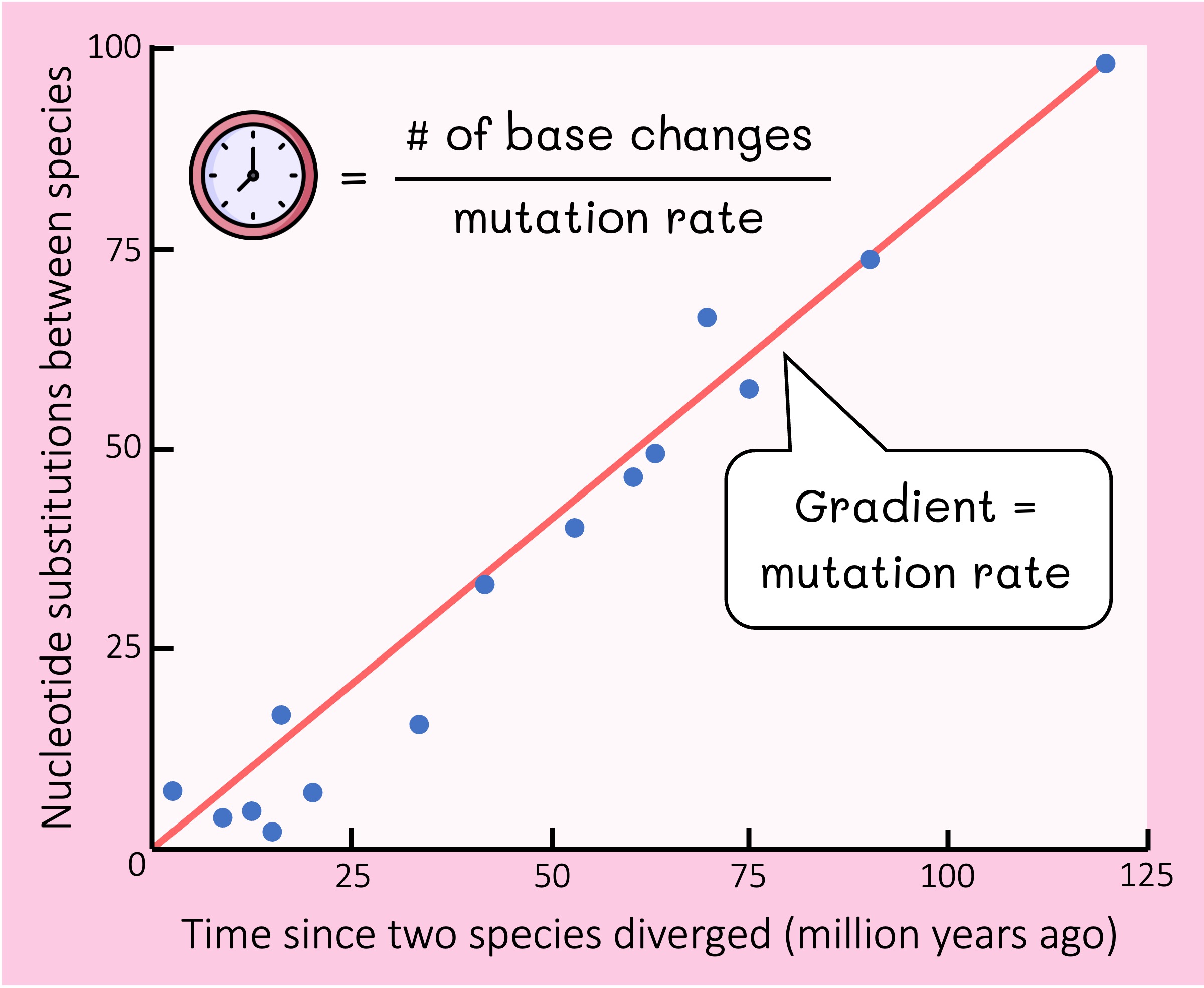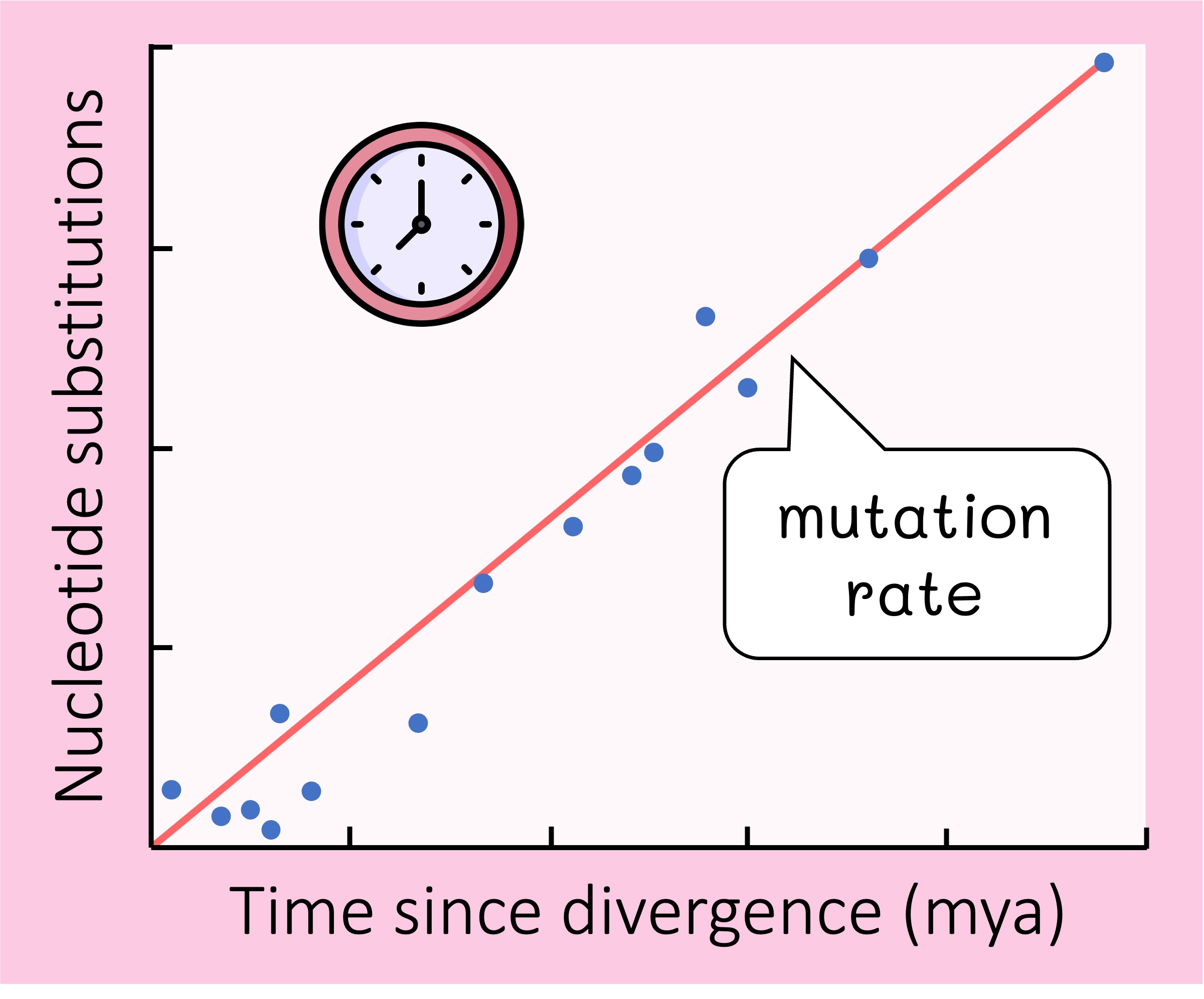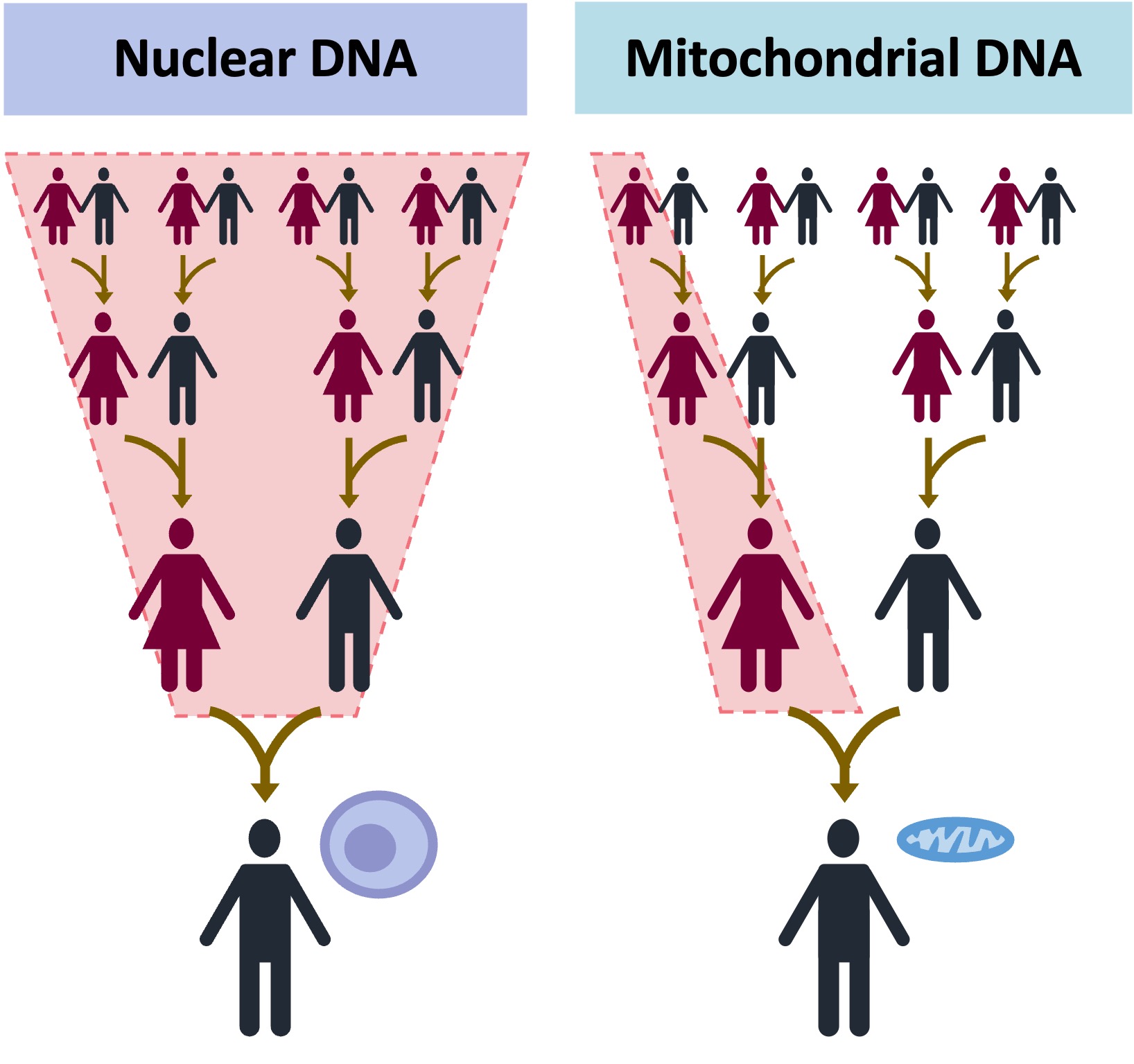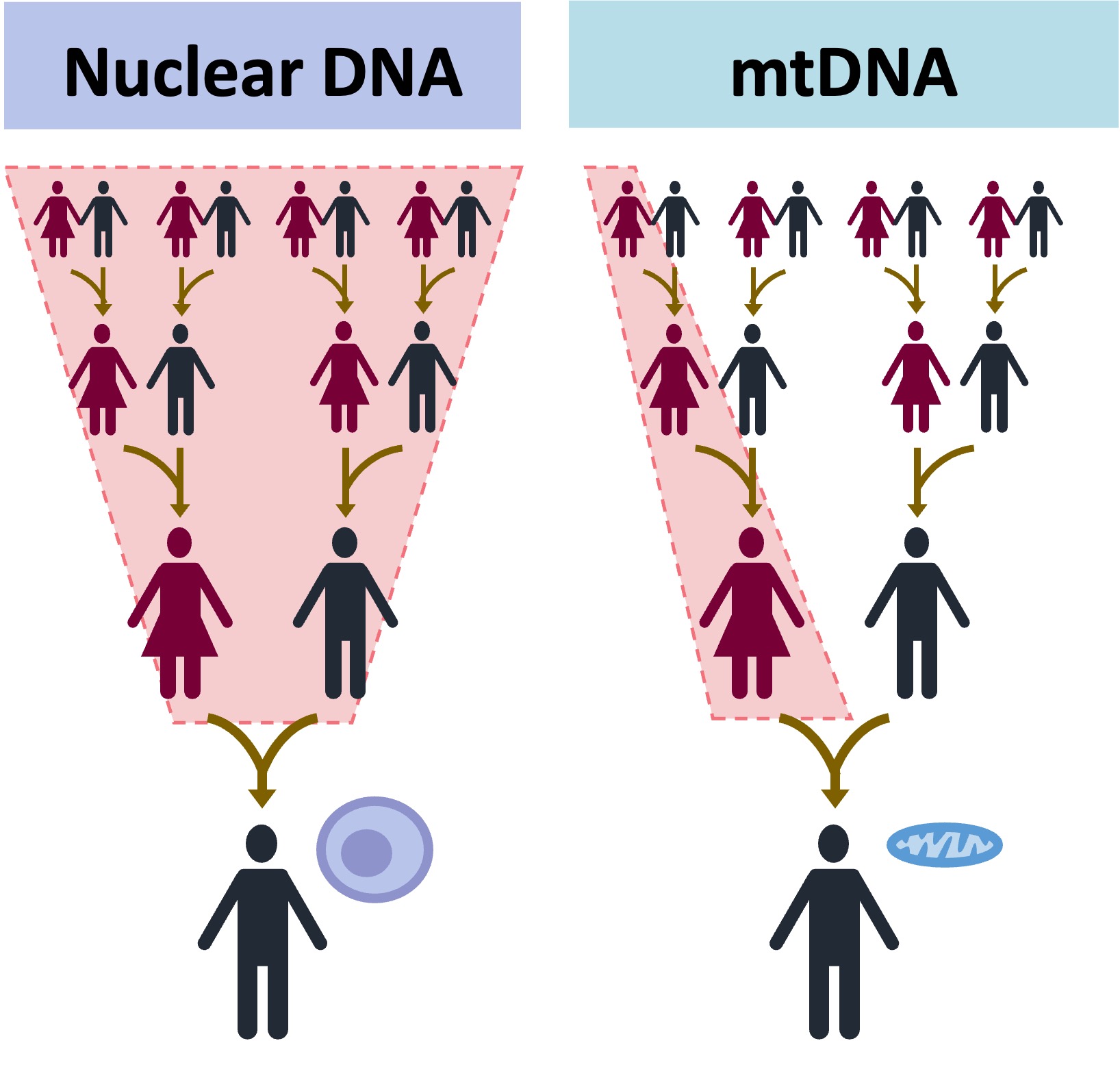

Molecular Clock
Some genes or protein sequences may accumulate mutations at a relatively constant rate (e.g. 1 change per 1000 bases every generation)
-
If this rate of change is stable and reliable, scientists can calculate the time of divergence according to the number of differences
This concept is called the molecular clock and is limited by a number of factors:
-
Different genes or proteins may change at different rates (e.g. haemoglobin mutates more rapidly than cytochrome c)
-
The rate of change for a particular gene may differ between different groups of organisms (generation times may vary)
-
The occurrence and intensity of selection pressures may alter the frequency of base changes (i.e. mutation rate may not be stable)
-
Over long periods, earlier changes may be reversed by later changes, potentially confounding the accuracy of predictions
Molecular Clock Concept


Mitochondrial DNA
Mitochondrial DNA (mtDNA) is often used to establish a molecular clock when comparing eukaryotic organisms because it possesses a number of beneficial characteristics:
-
Maternal inheritance – mtDNA is inherited from the mother only, providing a much more direct genetic lineage
-
No recombination – As mtDNA is passed from the mother, no recombination occurs, maintaining sequence fidelity
-
Higher mutation rate – Mitochondria produce reactive oxygen species, which cause sequences to mutate at a higher rate
-
High copy number – As every cell has mitochondria, large amounts of mtDNA can be gathered for sequencing
Mitochondrial DNA is ideal for comparing organisms within a species or those who have diverged recently (> 20 million years)
Inheritance Comparison






